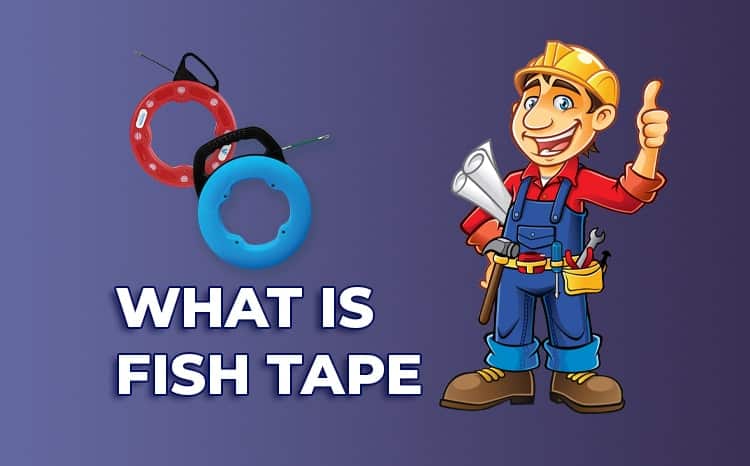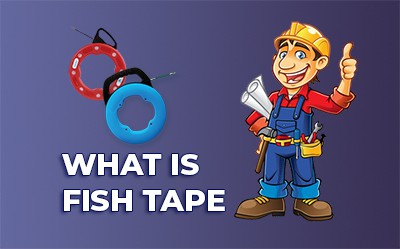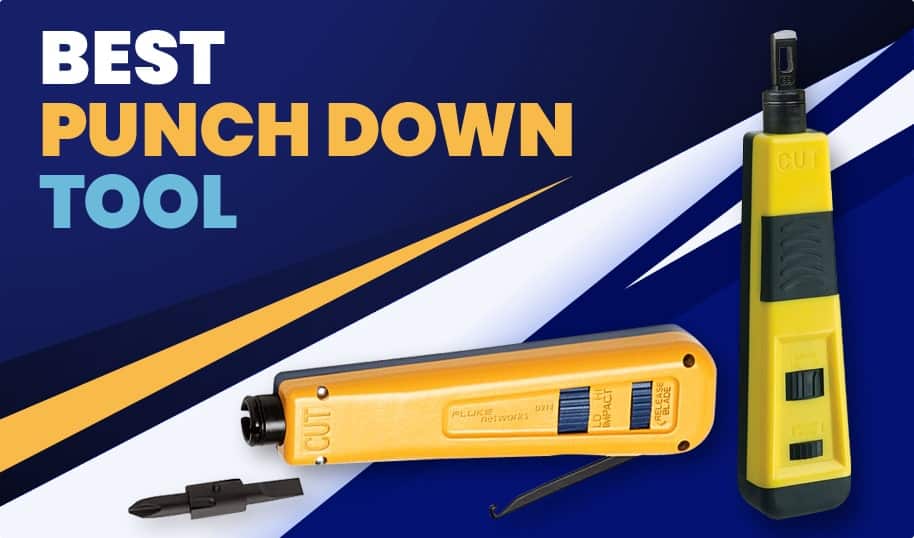
Electricians use various tools on a regular basis while working on job sites.
If are a novice electrician or a DIYer, then you should educate yourself with the application of various electrical devices.
One of the most important tools used while working with electricity is a Fish Tape.
This raises the question, what is fish tape? It is a device that is used by electricians to route the wiring through walls or electrical outlets. It is commonly known as an electrician’s snake owing to its snake-like structure while some also call it a draw wire or draw tape.
I know that you are still curious in knowing what is fish tape in detail?
An Electrician’s snake is used for various purposes.
I have explained the detailed application of a fish tape in the coming sections.
What is Fish Tape Utilized for?
The most common use of fish tape or an electrician’s snake is to run conduits through the areas that are normally out of reach. Let me explain what a conduit is? It is a tube that is built to keep the electrical wires protected. Without the conduit, the electrical wires will be exposed to outside effects.
When defining what is fish tape I need to inform you about its physical appearance. They look like a thin rod that is either is rolled in a reel. It is folded at the end and can be forced through the conduit.
When the wire exits, it is attached and the tape is pulled back. After this, the fish tape is linked to the conductor or an electric-box. Ideally, this equipment is used where it is difficult for your hand to reach can small wires like roofs or tight spaces.
How to Use a Steel Fish Tape
What is Fish Tape Design and Structure Like?
The fish tape or a tape draw has a natural curvature which allows them to be guided into confined spaces like wall cavities. You can direct the fish tape by manipulating the reel. Since the tape structure is rigid, you can only push it in the direction it points. Either steel, nylon or fibreglass is used to make this tape.
Different Types of Fish Tapes
There are a variety of fish tapes available in the marketplace. To give you a clear idea, this device is used either for commercial purpose or residential. Both the products vary in structure, design and utility. They have different strength and their prices also differ. If you are a DIYer, then you would probably use a residential fish tape as you can do quick errands with it. Whereas, the expert electricians must opt for the commercial fish tapes.
Materials used in the construction of fish tape?
Since you already know what is fish tape, now it is important that you understand the different materials used in the various types of this product. I have deliberately included this sub-section in the types of fish tape as you would find different types of material used for its construction. The below details will help you differentiate and choose wisely.
Ideally, three types of materials are used in the construction of fish tape. It can be made from steel or fibreglass or Nylon.
What is Fish Tape made from Fiberglass and how is different from the one made from Steel or Nylon?
I have observed that the most popular and common material of construction in case of fish tape are fibreglass or steel. They have specific uses and hence you must understand their differences. Let me explain point-wise how and when to select these specific fish tapes?
- If you are DIYer and looking for a cost-effective option to get your work done, then I suggest you choose steel fish tape, since it is comparatively less costly.
- If you are an expert electrician and work across a variety of large projects, then a fibreglass or nylon fish tape should be your first choice.
- You should select a steel fish tape when you are looking to work on a smaller project.
- Whereas, if you are looking for a durable fish tape that gives out impeccable performance, then the one made from fibreglass or nylon would be more suitable.
- Fish tapes made from fibreglass and nylon are more durable and give you a better return on your investment since would last longer.
- Steel or fibreglass fish tapes are rigid but they also get bent out of shape.
- Nylon is considered to be the most flexible material from which fish tape is made. If you plan to use it in conduits with bents, then this is probably the best option.
- Moreover, Nylon is flexible but does not lose its rigidity. If you are an expert electrician contemplating to buy fish tape, then I suggest that you opt for the one made from Nylon.
Steps to Using a Fish Tape Through a Conduit
How To Attach Wire To A Fish Tape
To give you a clear understanding of the steps involved I have once again used the pointers. Since now you have a clear knowledge of what is fish tape and its types, you must understand how to use one.
- The first step is to examine the conduit. Do this before you use the fish tape. It is important that you check the conduit length. This can be done by measuring its near end to the far end.
- Next, you should unwind your fish tape based on the measurement you took and start feeding it to one end of the pipe.
- There is a risk of string falling off and so you need to prevent this by using a vacuum and sealing the connection. You can use a vacuum cleaner and fasten it to other ends if required.
- When you push through the fish tape, ensure that it does not stop or get stuck.
- It is important to be careful while pulling the string using vacuum as sometimes they get pulled in the vacuum cleaner itself.
- Once you pull out the light string, you must keep it attached by using a heavier string. You might have to do this manually so that you can pull it through the pipe.
- After you pull it successfully, attach the fish tape and pull it manually from the conduit.
The major advantage of using a fish tape is that it offers a lot of flexibility and strength to pull the wires. You can save a lot of time by using these fish tapes to push to new wire through the conduit.
Why Fish Tape Gets Jammed?
I have observed that this is very common with regular usage. Some people do not prefer to invest in good quality fish tape thinking that they are eventually going to break. Sometimes, jamming is a result of such decision as cheap quality fish tapes are not built to last long.
The modern and advanced fish tapes are durable and are considered fit for tough jobs. You should opt for the best quality ones for any type of work.
One of the most common cause for jamming of fish tape is overstressing. When you use them in narrow spaces pulling or pushing too strongly would damage the structure of the fish tape that eventually results in jamming.
Tips to Use your Fish Tape at Work
I have already explained what is fish tape, its uses and types but what I have not covered is the precautions or measures that you must take while using a fish tape at work.
- Keep the end of the fish tape protected at all times.
- Never keep the end of the fish tape exposed as it can be dangerous. A slight scratch may leave a nasty mark on the body part and therefore you need to practice caution while using it.
- You can use pliers to crimp the fish tape ends. This would ensure that the sharp edge is kept under control.
- Never the ends slightly bent because when you use these fish tapes in the narrow wall opening, the bends tend to make them stuck.
- Flipping the fish tape back and forth will stop it from self-coiling.
- It is a good practice to use marks for tracking distance.
- If you get stuck then use different bends to check which side works.
- A good technique is to measure in advance how far the fish tape is required to go and then mark it by wrapping and electrical tape around it. This would help you know immediately if your fish tape gets stuck or goes off course.
- You must turn the fish tape clockwise and counter-clockwise as it becomes easier to apply wire through the wall.
Final Thoughts
It is almost impossible to guide the wire through narrow openings without using fish tapes. Use of fish tapes has become very common these days and it is very important that you gain proper knowledge about this product before you start using it. I drafted this article to give you a clear understanding of what is fish tape and its various application and types.
While writing this article I have focused basically on a DIYer, a novice electrician and an adroit electrical professional. I hope this write-up provides valuable insight to you about fish tapes.





